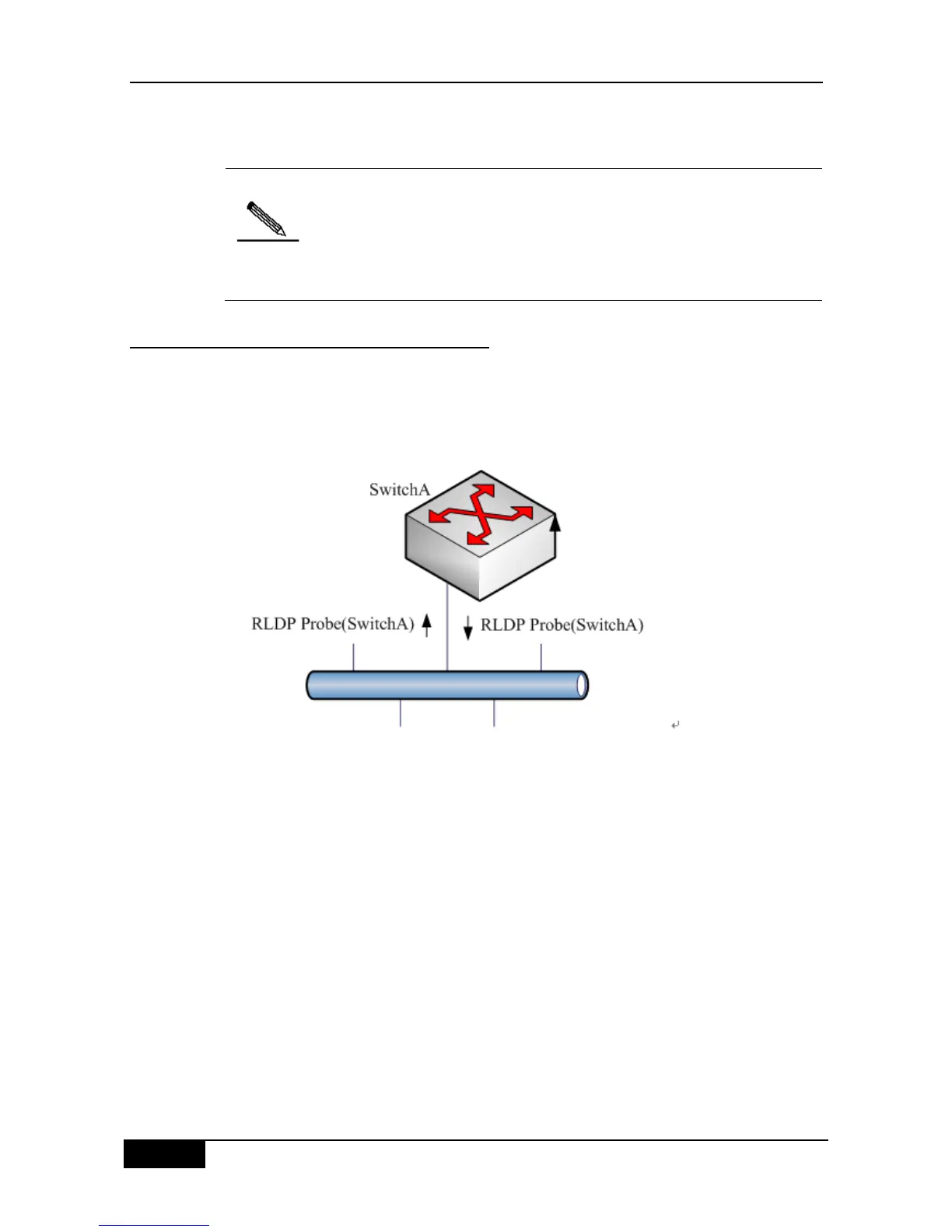Chapter 47 RLDP Configuration DGS-3610 Series Configuration Guide
able to receive the Echo packet of the neighbor port as well as the Probe packet of the
neighbor port. Otherwise, the link is considered abnormal.
To make use of the one-way detection and two-way detection functions of the
RLDP, it is necessary to ensure the RLDP is enabled on the ports at both
ends of the link. And, it is not allowed for a port with RLDP enabled to
connect multiple neighbor ports. Otherwise, the RLDP cannot detect the
health conditions of every neighbor link.
47.1.2 Typical Application
Loop detection:
Figure 47-2 Loop detection
The so-called loop fault means that a loop appears on the links connected with the port. As
shown above, on a port the RLDP receives the RLDP packet sent from its machine, so the
port is considered as loop fault. The RLDP deals with the fault according to the user
configurations, including alarming, setting port violation, turning off the SVI with that port and
turning off the port learning forwarding.

